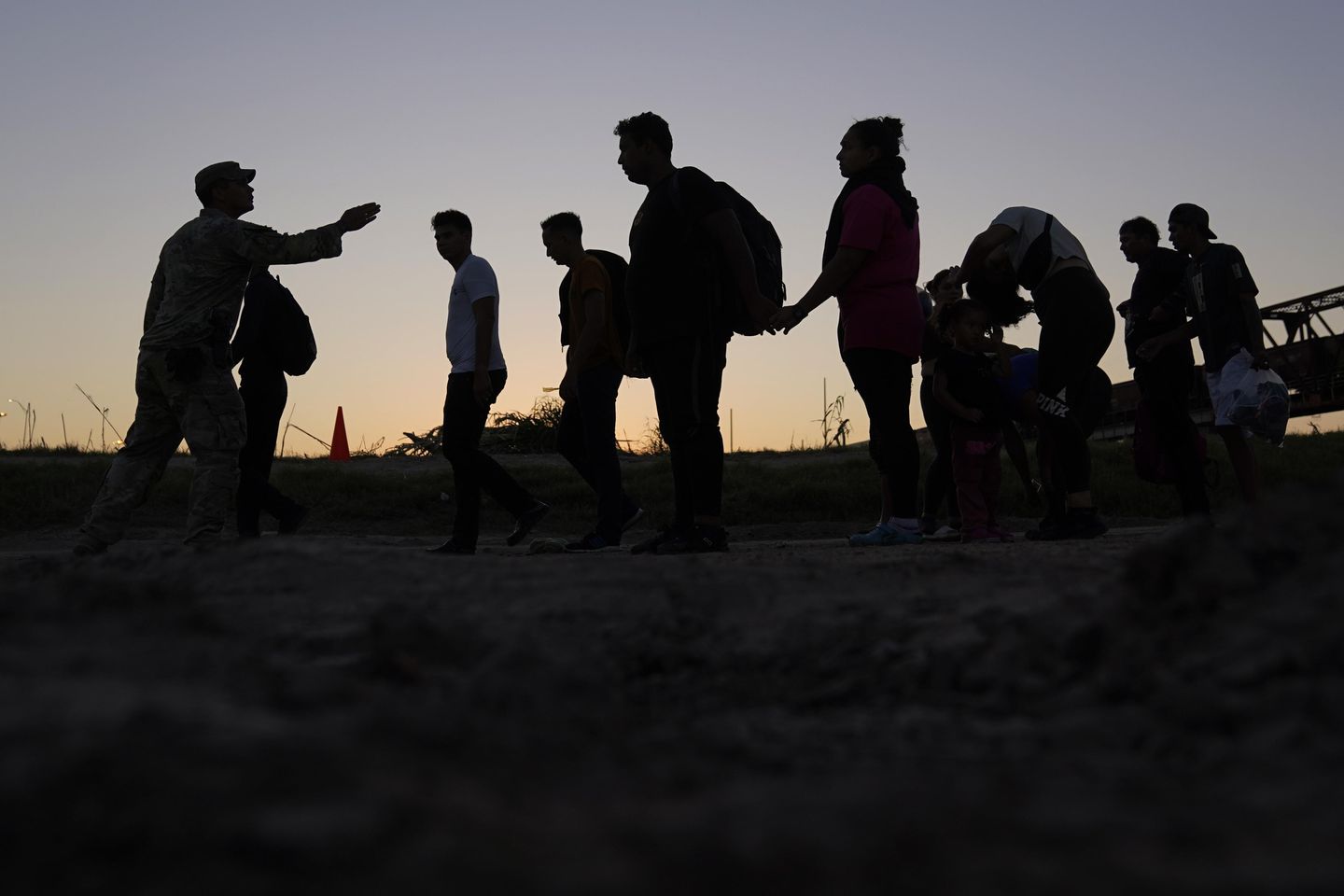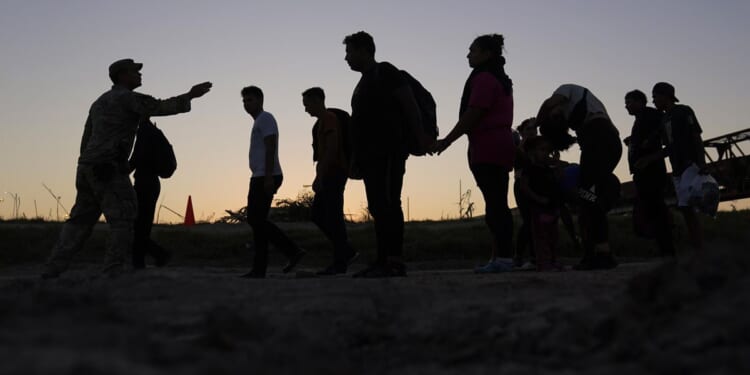
The Department of Homeland Security closed out the 2025 fiscal year with the best border numbers in five decades, showing significant drops in every major category except one: the number of terrorism suspects detected crossing.
The number increased nearly thirtyfold, from several dozen a month at the northern and southern borders to more than 950 in September alone.
That’s good news, U.S. Customs and Border Protection Commissioner Rodney Scott told The Washington Times.
It’s not that more terrorism suspects are crossing into the U.S., but more are being flagged in the Terrorist Screening Data Set, better known as the terrorism watch list, since the Trump administration classified Mexico’s biggest smuggling cartels and several international gangs as terrorist organizations.
“The elevated number of TSDS matches is not a surge in new threats — it’s the result of properly identifying the dangerous actors who were always there and our ability to actually identify who is crossing the border after four years of an invasion,” Mr. Scott said in a statement to The Times.
The watch list is maintained by the FBI but used by other agencies, including those responsible for guarding the borders.
It holds biographical data — names, birthdates, fingerprints and photographs — of known or suspected terrorists. That means the government has information suggesting that they have taken part in or are planning terrorist activities, or they associate with those who are involved.
The numbers detected at the border used to be relatively small.
During the first Trump administration, CBP averaged 360 detections at the border annually, the majority at official border crossings between the U.S. and Canada. Experts said many of those were commercial vehicle drivers of trucks making repeated crossings.
That number ticked up during the Biden years. A particular rise was in the number of illegal immigrant terrorism suspects caught by Border Patrol agents while trying to sneak across the southern border.
The Trump administration then began to designate cartels and international migrant-heavy gangs such as MS-13 and the Venezuelan-based Tren de Aragua as terrorist organizations. The numbers skyrocketed.
In May, as the designations took hold, CBP recorded 416 encounters with terrorism suspects at the northern and southern borders, surpassing in one month the usual yearlong figure. By August, the total had reached 859. In September, the last month for which data was released, CBP reported 957 encounters with watch-listed migrants.
A staggering 922 of those were flagged as they crossed through legal ports of entry from Mexico into the U.S. Another 23 were flagged as they went through legal crossings from Canada. The remaining dozen were Border Patrol apprehensions, 11 of them at the southern border.
The number of people on the watch list is a guarded secret, and it’s unclear how many names have been added with the designations of the cartels.
Mr. Scott said the designations were justified.
“These organizations have killed more Americans than many known terror groups conducting ideologically driven terror attacks, and operate through poly-criminal networks with command-and-control hierarchies,” he said. “They generate massive revenue through narcotics trafficking, human smuggling, weapons trafficking and money laundering — using violence, intimidation and political infiltration to advance their agenda.”
Rachel Levinson-Waldman, director of the liberty and national security program at the Brennan Center for Justice, said the numbers suggest tallies of border crossers with only “a very attenuated connection to a cartel.”
She said that might include someone with a family member in a cartel or whose family was pressured into paying the cartel money. She said the government has, in other contexts, used a “three-hops” rule that allows designation of people who are associates of associates of associates of a suspect.
“A similar approach to determining who is connected to a cartel could easily sweep in scores of innocent people. As a result, these numbers say little about any actual danger posed at the border,” she said.
Tricia Bacon, a professor at American University, said the rising numbers could also indicate a new focus by the intelligence community on the cartels.
She said intelligence chiefs have prioritized the collection of information about the cartels in response to President Trump’s directives, which has likely added more names of cartel associates to the government’s collection of data.
Even before the terrorist group designations, the U.S. tracked cartel members as members of transnational criminal organizations, Ms. Bacon said.
“So if individuals associated with them tried to cross the border, they still should have been flagged/detected, just not necessarily through the TSDS,” she said.
Mr. Trump has overseen an almost unbelievable transformation at the border.
Border Patrol arrests at the southern border reached a 55-year low, with a total of 237,538 apprehensions. That figure reached more than 2 million each in fiscal years 2022 and 2023 and 1.5 million in 2024.
Most of the arrests in fiscal year 2025 occurred in the first four months, largely during the Biden administration. Taking those out of the equation, the Border Patrol snared fewer than 58,000 illegal immigrants over the final eight months of the fiscal year, or about 250 daily.
In December 2023, the worst of the Biden months, agents averaged more than 8,000 arrests daily.
Search and rescue operations, another yardstick of chaos, fell from a record of more than 37,000 in 2023 to 2,255 in fiscal year 2025.
Adding in numbers for October, the first month of fiscal year 2026, the Border Patrol has gone six straight months without a single catch-and-release at the southern border.
Immigrant rights groups say the stiffer security comes at the price of human rights. They say deserving asylum cases are being blocked at the border while others are not even making the journey.
Trump officials say they have solved what had been an intractable problem for decades.
“This is the most secure border ever,” said Homeland Security Secretary Kristi Noem.










